Image Credit: Ian Barbour under license from Flickr
Several prominent articles this year that have taken a position against energy efficiency have attracted enough press attention to require formal refutations. But these articles all have something in common: an ideological belief that markets work best unconditionally and therefore that a carbon pollution fee is the “first-best” best economic solution to climate change.
This belief seems to drive a key common tenet of these pieces: If a carbon fee is the best solution, it follows that energy efficiency policies must be second-best, or worse. The authors are motivated to find flaws in the outcomes of efficiency programs.
This blog rebuts those premises head on and demonstrates that far from being the “first-best” solution to climate pollution, carbon emission fees alone cannot solve the climate problem.
Price effects are too small to solve the problem
The simple economic theory behind carbon pollution fees is that if you price carbon, people will use less. But how much less will they use? This section starts with conventional wisdom about the effect of price, and shows that it would take unthinkable increases in energy prices to solve the climate problem through efficiency, despite the fact that efficiency is widely recognized as the cheapest and largest part of the solution.
How big of a carbon fee would it take to reach an acceptable climate solution? The consensus of climate scientists and the basis of climate policy since 1992 has been the assessments of the Intergovernmental Panel on Climate Change (IPCC). These call for a reduction of emissions from current levels of 80 percent or more in absolute terms. This would amount to a reduction of 85 to 90% from a business-as-usual scenario.
The effect of price can be calculated by a metric called elasticity of demand. If price goes up by 1% and this causes demand to go down by 1/2% then the elasticity of demand is 0.50 (usually expressed by economists as -0.50).
What is a realistic estimate of the elasticity of demand? Economic studies do not yield consistent results, but an optimistically high assumption might be 0.50. I will show in the next section that this assumption is far too high to account for oil price trends since 1970, but let’s assume it is valid for the moment and see what it means.
If we wanted energy demand to drop by 85% due to price, the math behind elasticities shows that we would require a price increase of 44 times. This is an impossible condition: energy prices are already hovering just short of 10% of GDP in America, so a 44-fold increase would make them go up to about half of GDP, even accounting for the fact that consumption is 85% less.
Promoting efficiency improvements as well as carbon taxes
Suppose that we didn’t insist that demand reductions do all the work, and relied, instead, on the same mix of efficiency and renewables and other greenhouse pollution reductions as the International Energy Agency does. (This mix understates the true efficiency potential for nine distinct reasons that are addressed in Invisible Energy). In this case, we might only need to reduce demand two or three-fold compared to business as usual.
Then we would “only” require a five-fold increase in energy price. Energy would be pushing a fourth of GDP. This might or might not be physically possible, but it is not politically possible. Electricity at 50 cents a kilowatt hour? Gas at $12 a gallon?
And it would be damaging to the economy and potentially devastating to the poor. We know this because climate change deniers have used energy/economic models that only consider price effects — and ignore policies — to show that solving the climate problem would be economically burdensome.
These discouraging results are calculated under the assumption that price responsiveness is pretty high. Next, I show that this is not the case, and therefore, that the impacts of relying solely on pollution fees are even more troubling.
It is far worse than this for advocates of price effects
I mentioned that the economics literature does not provide any self-consistency in the estimates of price elasticities. This is a problem, because if a scientist tries to measure something and two researchers get two different answers, it suggests that the thing being measured may not be well defined, or that the methods of measuring it are unreliable.
So I will suggest a manner of testing the level of price elasticity for oil, which shows what an economic model based on low price elasticity would predict compared to the predictions of a model with high elasticity. The difference is so large that you can perform this test without even the necessity of constructing a formal mathematical model. It examines the consequences of two hypotheses: one that price elasticity is high (at the same -0.50 as above) and one that it is near zero.
What if elasticity was high?
Let’s assume that the price elasticity of oil is about 0.5 in the long run and .1 in the short run. These are not at the upper limit if the range of estimates in the literature, and as you will see, the exact numbers don’t make any difference in the conclusions. Suppose oil prices suddenly triple, as they did in 1973. The expected response in the first year is that demand goes down by 11 percent, on its way to a long term target of 42 percent reduction.
The point here is not the numbers, but their general trend: consumption would decline substantially at the same time that supply would increase. On the supply side, most of the increase would be subject to a time lag of 3 or 4 years or more, but on the demand side, a lot would happen immediately.
With such a large price increase, demand and supply would soon equilibrate. We would quickly close in on reductions of more than 25 percent in demand. This relatively quick adjustment would mean that the tripling in price would be short-lived and that the more expensive supply options would not get developed because of the rational expectation that prices would not stay that high for that long.
Price fluctuations would be relatively short-lived and relatively small, especially after the learning experience from 1974 to 1978 and then 1979 to 1985. We would not have extended periods of overinvestment in supply, leading to gluts and eventually crashes in price, nor long-lived periods of higher prices.
What if elasticity was zero?
In this scenario, price equilibration would be entirely on the supply side. Previously unattractive sources would be developed, but due to long lead times, production would not increase much for several years. Prices would stay high for a time scale of 4 years or longer. Lead times would in practice be even longer because some of the new resources required policy decisions before drilling was allowed.
Since demand stayed constant and lead times were long on the supply side, lots of new supply would be developed. The first projects would be immensely profitable at high oil prices. At some point, the enhanced supply would reach and overshoot demand. It would overshoot because oil production is determined by markets with many independent competitors, and OPEC was always limited in how much it could control output.
With this imbalance, oil prices would drop. Some or much of the new supply would not have been economic at the new low price, but with most of the drilling and exploration costs sunk, it would still make sense to maintain production. So the glut would be persistent. It would last more or less the typical amount of time to deplete a new oilfield.
Low prices would then discourage new drilling and set up a new price spike. That one, in turn, would persist at least 3 to 4 years.
Which is right?
Consider the two hypotheses: relatively high elasticity of demand and zero elasticity.
Which does a better job of predicting the oil price experience of 1970 to present?
What we are trying to predict/explain is in the chart below (see Image #2 at the bottom of the page).
Clearly the zero-elasticity model gets it pretty much right, and the high-elasticity model fails.
Of course, the real world is much more complicated than this. In the real world, demand reduction can occur through policies as well as price effects. In particular, policies such as automobile fuel economy standards or the reduction of oil generation and its replacement by gas and by efficiency and renewables reduce demand by a lot, albeit with a pretty long lead time compared to 3 to 4 years.
Oil prices are heavily influenced by OPEC and the political relations involved in it, and the technologies for drilling also affect price.
But the broad conclusion remains that the real history of oil prices is clearly and evidently inconsistent with the high-elasticity model and instead is broadly consistent with the predictions of the zero-elasticity model.
What does this mean for climate policy?
This exercise has immense consequences for evaluating the question of carbon emissions fees as the primarily greenhouse gas reduction strategy.
This analysis does not apply to actually implemented or proposed cap-and-trade plans, such as the one adopted by California pursuant to AB32 or the one proposed in the Waxman-Markey bill, both of which rely primarily on non-price energy policies. The overwhelming bulk of emissions savings come from improved building and equipment efficiency standards, integrated land use and transportation system planning that meets goals for travel reduction, emissions standards on fuels and vehicles, requirements for utilities to purchase and integrate renewable energy sources, regulatory reforms that encourage utilities to rely primarily on energy efficiency, and a host of other policies that are independent of energy prices.
The conclusion is that limiting climate change to accepted levels will require a strong reliance on energy policy measures for efficiency and renewables — policies that make markets function the way simple economic theory suggests they should but the way the economic facts show they don’t.
Charging a price for carbon is a part of the solution, but a small part. Quantitatively, where we have cap-and-trade policies in place, the market-clearing price for carbon is low. It results in energy price increases of less than 5 percent at worst, and zero or even negative at best. The increase may be zero or less because while the emissions permit fee tends to increase retail prices modestly, the other energy policies reduce wholesale energy demand, which reduces retail prices. And even the high end of this price range is too low to have much influence on demand.
Its influence on supply, while not negligible, is still not that large. Although not its intended purpose, the permit fee has an important subsidiary role as it funds that portion of clean energy policies that are based on financial incentives not already provided by utilities, tax credits, or other sources.
These investments in efficiency and renewable energy programs and for smarter planning in communities so that they do not require such heavy reliance on private cars are highly effective from both efficiency and equity perspectives. We are providing alternatives that are more attractive, that help the poor preferentially, and that overall reduce consumer costs for energy services. This is what California is doing under AB32.
Encouraging clean energy sources works better than carbon taxes
In summary, carbon pollution fees, as a stand-alone policy, are incapable of doing much to solve the climate problem. But policies to encourage clean energy are working, and careful evaluations of them are showing them to work pretty much as advocates such as NRDC have predicted and expected.
Providing more funding for them, and particularly for programs such as smart growth planning that are hard to support from other sources, makes them work far better.
Pollution fees play an important supporting role in stopping climate change, but they are not the star performer.
David Goldstein is the co-director of the energy program for the Natural Resources Defense Council in San Francisco. This blog was originally published at the NRDC’s Switchboard.
Weekly Newsletter
Get building science and energy efficiency advice, plus special offers, in your inbox.

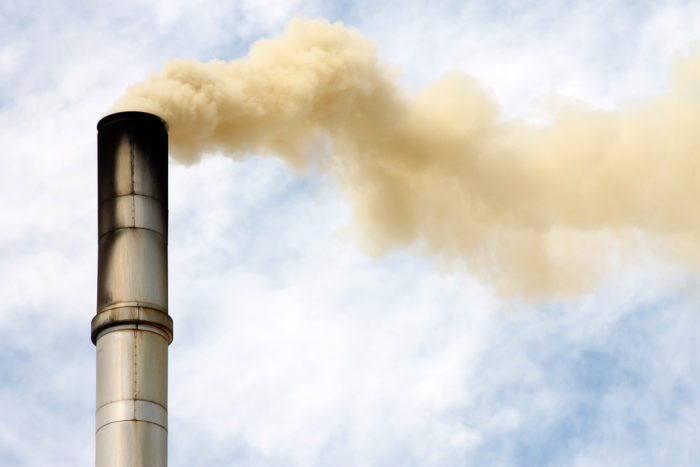




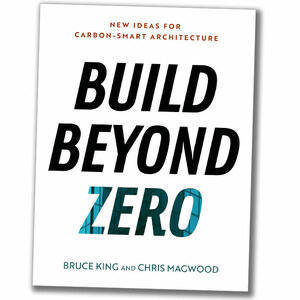
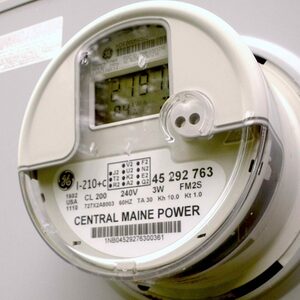
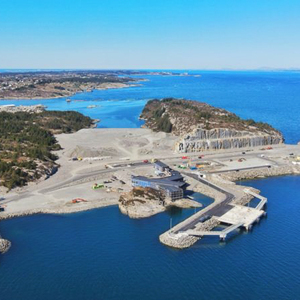
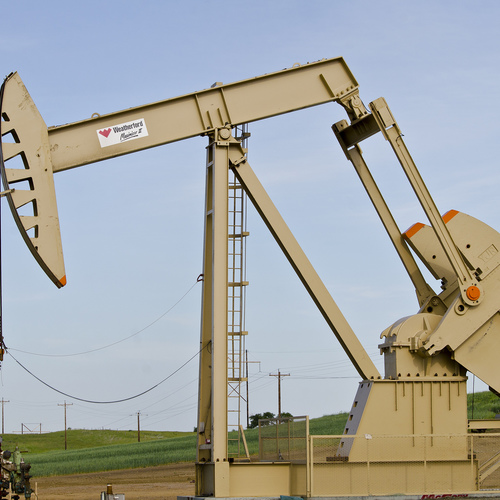






2 Comments
Carbon Tax Me
Rather than imposing fees on industry, why not tax the user for the carbon they use? These taxes could largely replace income tax, making the impact cost neutral. But if our taxes were based on our choices instead of our income, imagine how society might change.
For example, if gas taxes were $5/gallon, the demand for fuel efficiency would come from the marketplace instead of imposed through policy that is politically difficult. Gasoline consumption would be further reduced because individuals would think twice before using the car, and combining trips would become a habit. If efficiency increased to the point where consumers felt they could afford more gas, the tax could be increased to maintain the effect. And since it is a tax and not a fee, the poor could be subsidized so that it was not a regressive tax. Finally, the tax could be tiered such that wealthy individuals would also be incentivized to consume less.
I propose we promote the idea of our climate as a commons. Individuals, individual companies, and individual market segments do not have the right to take more for their own benefit. Humans collectively have behaved in the classic way that leads to the Tragedy of the Commons (Google it). The result is soon to become inconceivably tragic indeed.
Yes and No
For industry where every significant investment will have the expected return on investment calculated, a carbon tax should produce exactly the expected results. An electric utility will look at the investment amounts, the operating costs including fuel and any carbon taxes, the expected life of the equipment and the cost of funds to determine if it should keep operating its old coal plants, convert them to gas, build new gas plants, nuclear plants, solar or wind. Similarly, a company building or maintaining a major manufacturing plant will look at all the details very analytically. Should standard or high efficiency motors be used. The same for the lighting, building insulation, heating systems, process heating, etc.
On the individual level, there are undoubtedly a few engineering or financial nerds who make those calculations when they go to buy a refrigerator, or a car, or a washing machine, or a furnace, etc. Most people will either make a seat of the pants guess on which one is best or is so confused with the whole buying process that they ignore the yellow EPA stickers all together and go for the cheapest or the shiniest. Most people value what they have now much more highly than what they get in the future so I am pretty sure that people will consistently error on the side of the cheaper item when the more expensive and efficient item would be beneficial to them in the long run. There is a rather famous marshmallow experiment where 5 year olds were given a marshmallow and told if they didn't eat it for five minutes, they would be given a second marshmallow. Some would sit and fidget and worry and make it five minutes to get a second one, others would fail and eat their marshmallow early. Adults are the same only they have credit cards and bigger budgets and bigger toys.
Increased efficiency standards for consumer goods is probably a much more effective way to have wide spread adoption of high efficiency cars, appliances and light bulbs. A carbon tax will help with the behavior issues. A Prius uses twice as much energy if it is driven 200 miles than 100 miles. The most efficient refrigerator doesn't help if the old one is move to the garage to keep an occasional six pack cold.
Log in or create an account to post a comment.
Sign up Log in